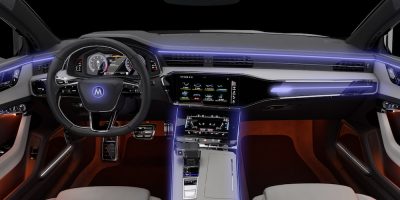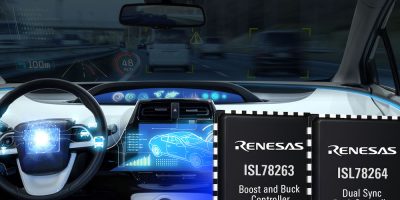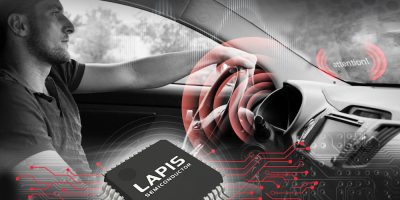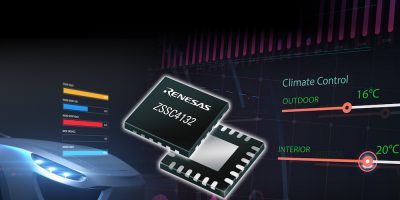Support for MeLiBu, the high speed communication interface differentiates the MLX81116 multi-channel RGB LED driver, says Melexis. The high speed communication IP enables automotive manufacturers to provide enhanced features in new models with smart interior lighting and to enable intelligent, automated lighting, continues the company.
MeLiBu is already being leveraged by leading manufacturers to enhance the safety features of their latest models. For example, animated lighting in the vehicle’s cabin can convey important driver assistance prompts and vehicle status information. An RGB LED lightbar communicates to the driver, through colour coding, colour changing, and blinking sequences.
Key engineering challenges for this systems include maintaining consistent colour across all the LEDs in the lightbar and ensuring they all change simultaneously. The MLX81116 addresses this through the high-speed communication interface IP, MeLiBu which controls individual LEDs separately in the lightbar to produce the lighting effects commanded by the vehicle. The intelligent RGB LED controller also provides real time compensation of any LED colour drift caused by environmental changes.
The MeLiBu communication interface uses the CAN-FD physical layer, which ensures robustness, reliability and high speed (up to 2Mbit), explains Melexis. Support for dedicated optical parameters allows colour-mixing accuracy with a delta UV of one per cent to ensure no distinguishable differences between individual LEDs in the lightbar. In addition, intelligent high resolution for temperature-related colour drift helps maintain a consistent and non-distracting user experience under all operating conditions.
The MLX81116 driver IC has a wide dimming range that allows optimal brightness adjustment for daytime and night driving. It also meets automotive ISO 26262 functional safety requirements up to safety integrity level B (ASIL B) and features low EMI emission and high immunity, thanks to the use of the CAN-FD physical layer, which eases compliance with applicable EMC regulations, adds Melexis.
Melexis designs, develops and delivers mixed-signal semiconductor sensor and actuator components for integrating sensing, driving and communication into products and systems that improve safety, raise efficiency, support sustainability and enhance comfort.
Melexis has used its core experience in creating chips for vehicle electronics to expand its portfolio of sensors, driver ICs and wireless devices to also meet the needs of smart appliances, home automation, industrial and medical applications. Melexis sensing products include magnetic sensors, MEMS sensors (pressure, TPMS, infrared), sensor interface ICs, optoelectronic single point and linear array sensors and time of flight.
The company’s driver IC portfolio incorporates advanced DC and BLDC motor controllers, LED drivers and FET pre-driver ICs with the expertise to allow components to communicate whether wired or wireless.
Melexis is headquartered in Belgium.







